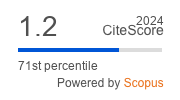Conceptual Metaphor as a Means of the OrganizationalIdentity Manifestation
Keywords:
organizational identity, state and private ownership organizations, metaphor.Abstract
The article represents the essence of the organizational identity concept, and the importance of its forming both for an employee and an organization. It is argued the actuality of its research from psycholinguistics approach. In particular, the peculiarities of metaphors use as the phenomenon of language, thinking and social environment of the individual and one of the most powerful instruments of a discursive analysis were identified. The metaphor сlassification introduced by G. Lakoff and M. Johnson was represented. The issue and content of each of the types (conceptual, ontological and orientational metaphors) were defined. The advisability of use of conceptual metaphors for peculiarities of organizational identity concept study was explained. The material represents results of empirical research of the organizational identity concept of public and private organizations’ employees, made with the help of division, basin on concept analysis, metaphors named by the investigated audience with accordance to the identified categories (metaphors of life, work, family, prosperity and transport). The peculiarities ofcategory division of the metaphors depending on a tenure in each of the excerpts were represented. Important differences of the studied phenomenon within employees of organizations of different ownership types, depending on the workers’ tenure were identified.References
- Lakoff, G., Johnson, M. (1980). Metaphors We Live By. Chicago: Univ. of Chicago Press.
Downloads
Download data is not yet available.
Downloads
Published
2014-11-23
Issue
Section
Vol 1 No 1 (2014)
How to Cite
Frolova, O. (2014). Conceptual Metaphor as a Means of the OrganizationalIdentity Manifestation. East European Journal of Psycholinguistics , 1(1), 17-24. https://eejpl.vnu.edu.ua/index.php/eejpl/article/view/205







 Creative Commons «Attribution» 4.0
Creative Commons «Attribution» 4.0